Gardeners

Things you can do in your Garden or Churchyard to Support Wildlife
There are lots of easy, cost free things you can do in your garden to support wildlife and soil health, which are both vital in the context of the climate crisis. Here is a summary of ten suggestions for gardens and public areas such as Churchyards. These suggestions have been kindly given to us and examples of the habitats have been created by The Mindful Garden Co.
By cutting the lawn less and letting even small patches grow long, you provide habitat for many insects and invertebrates e.g. some bumble bees will nest in long grass and some butterflies will lay eggs in it. There is nothing wrong with having a mown grass to use for children to play or for a seating area for your family, just consider leaving small areas unmown and encouraging the wildlife around the edges and in places you don’t use as often. A mixed approach is best for wildlife and human alike.
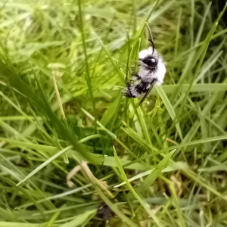
Ashy Mining Bee in long grass
By weeding the lawn less and letting wildflowers like daisies and self heal (prunella) grow, you are providing vital nectar to many native species.
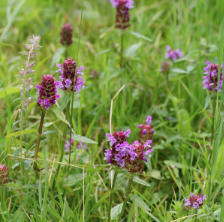
Moss sequesters 40% more carbon than grass! Using a moss treatment on your lawn damages the soil ecosystem below.
By leaving some flower heads on and letting them go to seed after flowering you provide food for birds and other wildlife in your garden through the colder months and when the stems begin to break down you will provide nesting spots for other beneficial insects and then compost for your soil as the worms take the plant matter back into it.
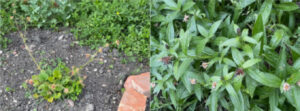
leave deadheads
Native plants support more insects and wildlife and pollinators than imported plant species. You can observe this for yourself by simply watching the popularity of things like Oxeye daisies and dandelions with pollinators. If you add more native plants and wildflowers to your beds and borders you will see a steady increase in the diversity of insects and wildlife that visit you. In fact, you don’t even have to add too many, if you leave some areas of bare soil in your beds and borders. Native wildflowers tend to be suited to harsher growing conditions and can be more resilient to the changing climate as they have adapted over a much longer period than cultivated varieties.
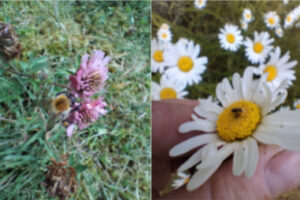
Red Clover. Oxeye Daisy
If you leave some areas of bare soil in your beds and borders, wildflowers will find their way in by self seeding or emerging from the natural seed bank in your soil and a great thing about this approach is that you can see what wants to grow where as nature tends to allow things perfectly suited to that patch of earth to grow in it.
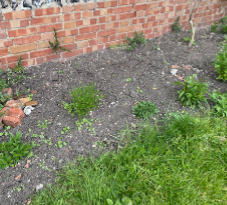
Adding even a small bowl of water to your garden with a few pebbles in it will provide a vital drinking stop for pollinators and small mammals like hedgehogs. You will also find the occasional bird using it to bathe. If you have space, adding a pond is a brilliant way to support declining frog, toad populations in your area. Even a small body of water will welcome in dragonflies and damselflies too.
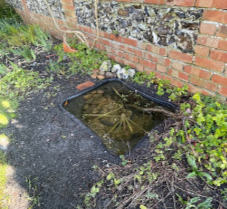 Small pond let into flower bed
Small pond let into flower bed
Habitat piles like dead hedges and bug snugs, bug hotels and bee posts and hybernaculums are all great ways to support the wildlife visiting and living in your garden.
A bug snug is a simple way to recycle dry and dead material in your garden that might not be suitable to compost like sticks and woody material. A bug snug provides nesting material for birds in spring, overwintering habitat for pollinators and some adult butterflies. Many other wildlife and invertebrates and soil microorganisms also utilise the material in the pile as it breaks down.
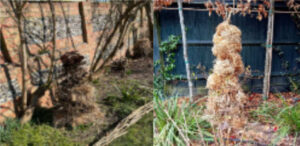
Bug Hotels made from dead foliage and flower heads
A dead hedge is a great habitat for small garden birds to hide from predators. You can also find hedgehogs, frogs and toads and field voles taking shelter underneath them.
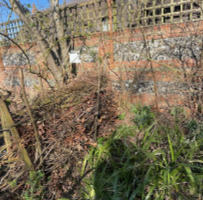
A hibernaculum is a place for frogs, toads, newts, snakes and slow worms to overwinter. It can be as simple as a pile of logs or sticks left in an out of the way place in the garden where they won’t get disturbed.
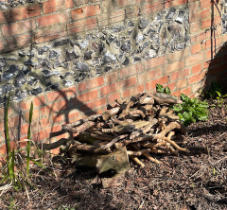
A bee post or bee brick or bee hotel offer nesting spots to different types of bees who nest in a solitary way. These can be as simple as drilling holes in an old fence post in your garden or making cob bricks out of clay and dried grass.
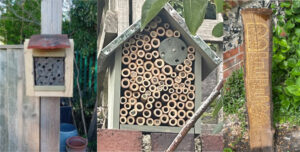
We are in the midst of a major biodiversity crisis and your garden, no matter how big or small, is a vital support to so much wildlife you might not even know is there. One simple way to support wildlife is to have permeable boundaries to part of your garden. Hedges are perfect for this but if you have solid walls or fences, this can be in the form of a hedgehog highway, which is a CD sized hole cut into the fence or wall which allows wildlife a way in and out between your garden and other gardens in your street.`
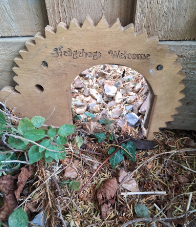 The Hedgehog Highway
The Hedgehog Highway
Select small areas to allow the native plants, weeds and wildlife to proliferate. You can mark the areas chosen with a dead hedge or a low border hedge made out of withies and stakes. This is then an ideal place to locate your bug snugs and hibernaculum for larger reptiles.
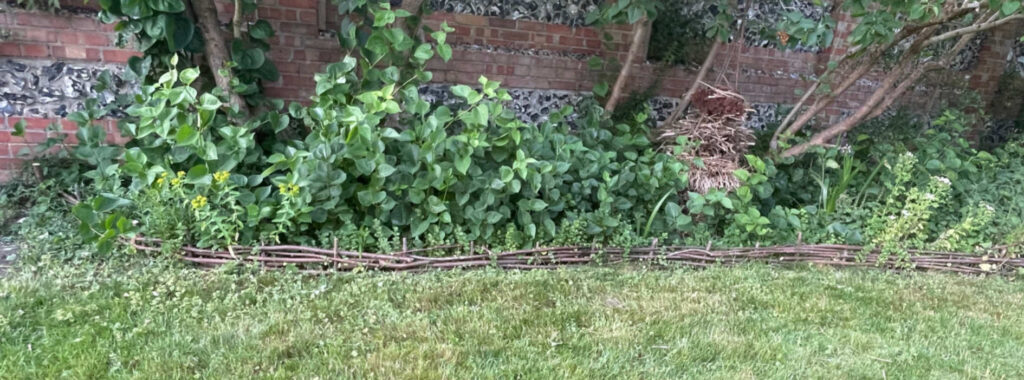
Local Initiatives
Cholsey leads the way by appointing a Parish Environmental Officer.
Bioabundance supports the initiative of Cholsey PC to appoint a paid post of Environmental Officer which has resulted in a parish wide survey to mobilise those taking part to support the conservation of our environment. All Oxfordshire Parish, Town and District Councils need to appoint Environmental Leads!
Cholsey Wildlife Garden Challenge. The aim of the Challenge is to encourage and help Cholsey people to make changes to encourage wildlife in their gardens – and earn certificates to reward their efforts! By making changes to help wildlife you earn points, and with enough points you can earn certificates for back gardens, patio gardens and balcony gardens, in Green, Silver and Gold achievement levels. Gold level gardens can qualify for an outdoor plaque to display their quality for wildlife. ‘We have created simple and easy forms for you to record what you have done for wildlife in your garden. There are forms for back gardens, patio gardens and balcony gardens.’
Blewbury Chalk Stream Community. Blewbury Chalk Stream Community is a volunteer group of scientists and lay people who, through community events and working with those who live by our waterways, are aiming to enhance life in and around our streams and the Cleve.
